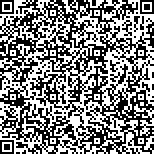本文已被:浏览 34次 下载 20次
投稿时间:2024-10-24 网络发布日期:2025-03-20
投稿时间:2024-10-24 网络发布日期:2025-03-20
中文摘要: 目的 探讨淋巴细胞及淋巴细胞各亚群的基线水平及其变化趋势在预测晚期非小细胞肺癌(NSCLC)免疫治疗疗效中的价值。方法 选取2021年3月至2023年2月在济南市第八人民医院接受卡瑞利珠单抗、紫杉醇、顺铂或卡铂一线治疗的Ⅳ期NSCLC患者97例进行回顾性分析,其中有效51例,无效46例。收集临床数据以及基线(第一个治疗周期前)和随后4个治疗周期前的淋巴细胞和淋巴细胞各亚群计数。通过受试者工作特征(ROC)曲线分析各项指标的预测价值。结果 有效组的淋巴细胞基线水平高于无效组[(1.52±0.57)×109/L vs (1.06±0.50) ×109/L, P=0.002],而CD3+ T细胞和CD8+ T细胞的基线水平低于无效组[(0.69±0.32)×109/L vs (0.94±0.46)×109/L, P=0.015;(0.28±0.15) ×109/L vs (0.38±0.25)×109/L, P=0.032]。 CD4+ T细胞、CD4+/CD8+比值、B细胞和自然杀伤细胞两组间差异无统计学意义(P>0.05)。基线淋巴细胞、CD3+ T细胞和CD8+ T细胞预测免疫治疗疗效的ROC曲线下面积(AUC)分别为0.736、0.658和0.653。在连续5次治疗周期中,有效组的淋巴细胞、CD3+ T细胞和 CD8+ T细胞呈现显著的上升趋势(P<0.05)。淋巴细胞、CD3+ T细胞和CD8+ T细胞的第四次测量与基线之间的差值(动态预测指标)预测免疫治疗疗效的AUC分别为0.915、0.879和0.885。 结论 淋巴细胞、CD3+ T细胞和CD8+ T细胞的基线值和动态预测指标在识别可能从免疫治疗中获益更多的NSCLC患者方面显示出良好的预测价值。
Abstract:Objective To investigate the value of baseline levels and trends of lymphocytes and their subsets in predicting the efficacy of immunotherapy for advanced non-small cell lung cancer (NSCLC). Methods A total of 97 patients with stage Ⅳ NSCLC receiving first-line treatment with camrelizumab, paclitaxel, cisplatin, or carboplatin at the Eighth Peoples Hospital of Jinan from March 2021 to February 2023 were ultimately included for retrospective analysis, including 51 responders and 46 non-responders. Clinical data as well as counts of lymphocytes and their subsets before the first treatment cycle (baseline) and prior to the subsequent four treatment cycles were collected. The predictive value of each indicator was analyzed through receiver operating characteristic (ROC) curves. Results The baseline level of lymphocytes in the responder group was higher than that in the non-responder group [(1.52±0.57)×109/L vs (1.06±0.50)×109/L, P=0.002], while the baseline levels of CD3+ T cells and CD8+ T cells were lower in the responder group compared to the non-responder group [(0.69±0.32)×109/L vs (0.94±0.46)×109/L, P=0.015; (0.28±0.15)×109/L vs (0.38±0.25)×109/L, P=0.032]. There was no statistically significant difference between the two groups in terms of CD4+ T cells, CD4+/CD8+ ratio, B cells, and natural killer cells (P>0.05). The area under the ROC curve (AUC) for predicting the efficacy of immunotherapy by baseline lymphocytes, CD3+ T cells, and CD8+ T cells were 0.736, 0.658, and 0.653, respectively. Over five consecutive treatment cycles, there was a significant upward trend in lymphocytes, CD3+ T cells, and CD8+ T cells in the responder group (P<0.05). The differences between the fourth measurement and baseline (dynamic predictive indicators) for lymphocytes, CD3+ T cells, and CD8+ T cells predicted the efficacy of immunotherapy with AUCs of 0.915, 0.879, and 0.885, respectively. Conclusion Baseline values and dynamic predictive indicators of CD3+ T cells, and CD8+ T cells demonstrate good predictive value in identifying NSCLC patients who may benefit more from immunotherapy.
keywords: Lymphocytes Lymphocyte subsets Advanced non-small cell lung cancer Immunotherapy Dynamic predictive indicators
文章编号: 中图分类号:R734.2 文献标志码:A
基金项目:山东省医药卫生科技发展计划项目(202103100315)
附件
| Author Name | Affiliation |
| ZHAO Tong, ZHU Tingting, CHEN Lei, ZHANG Weike | Department of Oncology, The Eighth Peoples Hospital of Jinan, Jinan, Shandong 271104, China |
引用文本:
赵彤,朱婷婷,陈雷,张伟克.淋巴细胞及其亚群的基线水平和变化趋势对晚期非小细胞肺癌免疫治疗疗效的预测价值[J].中国临床研究,2025,38(3):351-355,365.
赵彤,朱婷婷,陈雷,张伟克.淋巴细胞及其亚群的基线水平和变化趋势对晚期非小细胞肺癌免疫治疗疗效的预测价值[J].中国临床研究,2025,38(3):351-355,365.
